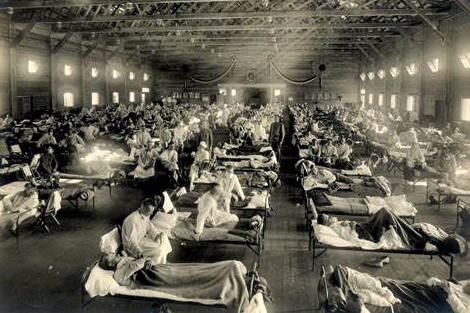
Our population is accelerating out of control; this pandemic is the latest threat humans have long been warned about
During mankind’s short and somewhat shaky stay atop the planet’s survivor list, we have produced our fair share of warners – women and men who sensed danger and rang the alarm bell or screamed at the top of their lungs that it was time to stop what we’re doing before it’s too late.
One of those alarmists was the dour English cleric and scholar/economist Thomas Malthus who, in his ‘Essay on the Principle of Population’ (1798), laid out an apocalyptic vision of the future in which people would breed like rabbits until the density per acre of land reduced wages to bare subsistence and led to a death rate equaling the birth rate.
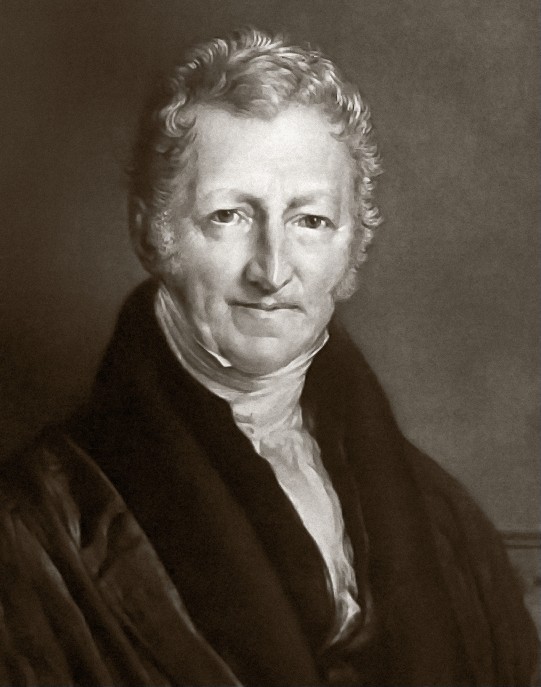
Thomas Malthus
He said our population would soon overshoot resources including food and spark war, extermination, sickly seasons, epidemics, pestilence and plague.
His nightmare scenario recently came true, as our recent pandemic sweeps through our built-up urban centres, especially the densest of them all, New York City. Commentators look back at Malthus and see a seer, the Nostradamus of demographics.
In 1750, when 750 million people inhabited the earth, three per cent lived in cities. It will reach 60 per cent by 2050, when 9.8 billion humans will roam the planet, and only a decade from now, 65 per cent of all Canadians will live in just four of our major urban centres – GTA, Montreal, Greater Vancouver Area and Edmonton/Calgary. They will live on a paltry 0.3 percent of Canada’s landmass. So much for social distancing.
These trends are creating fundamental problems for the future of our planet and its apex species, as people threaten to literally grow themselves out of existence.
Imagine an hourglass filled with sand. As the bottom fills with grains (the people on our planet) the top (the land on which they once subsisted) runs out.
As we move from places where the food is grown and flood into densely packed metropolises, our sustenance has to travel from farther away to reach us.
The planet’s population was just over 6 billion in the year 2000. It will reach 11.2 billion in 2100.
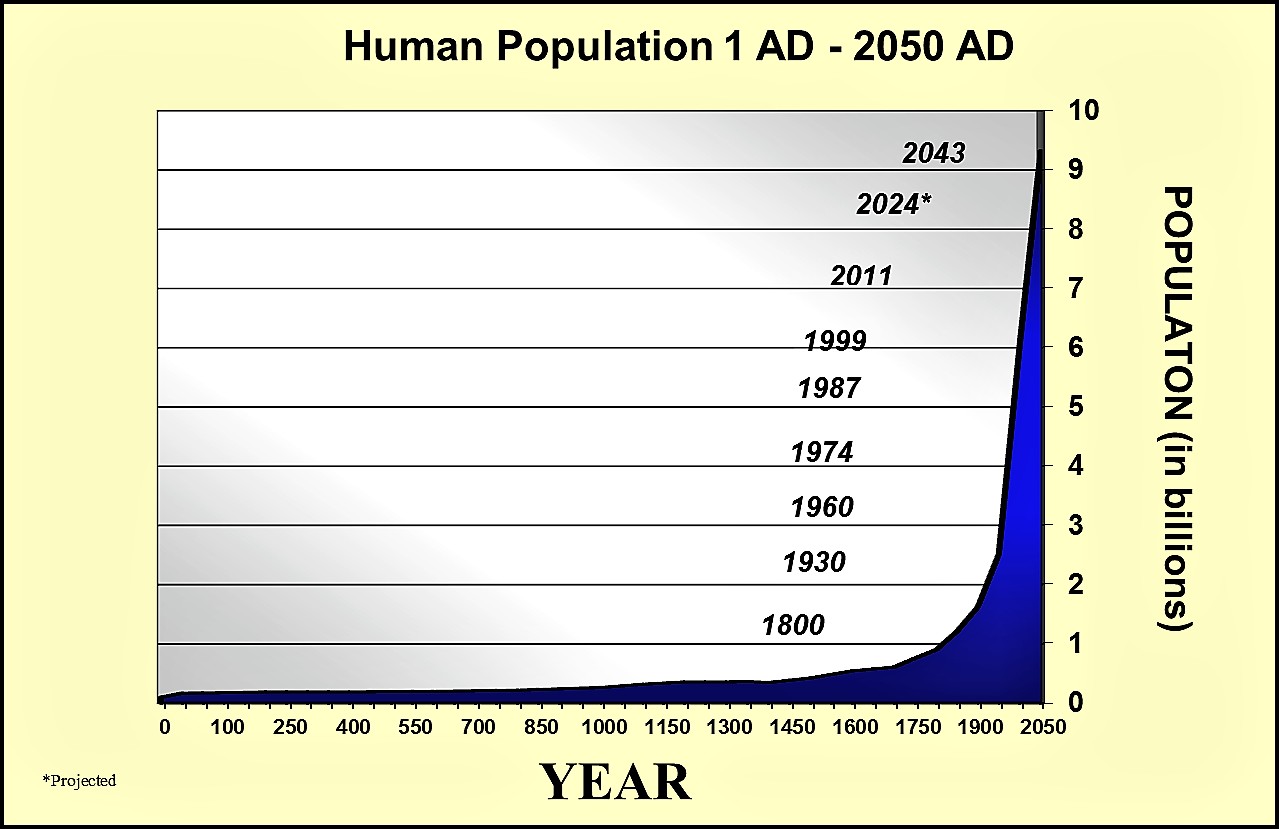
Ten thousand years ago, a mere blip in the earth’s 4.5 billion-year history, about 5 million people populated the planet.
And though the birthrate has plummeted, from 80 per 1,000 people then to 19 per 1,000 now, math works in funny ways.
Eighty new lives per every 1,000 in a population of 5 million represents 400,000 more people to feed. On a planet with 8 billion souls, a birth rate of 19 per every 1,000 means 152,000,000 more need to be fed.
Just like the contagion of a virus, sweeping toward its explosion beyond the tipping point, the earth’s population is spreading beyond the ability to support it. Food-production technology and resource extraction will have to reconcile with the math.
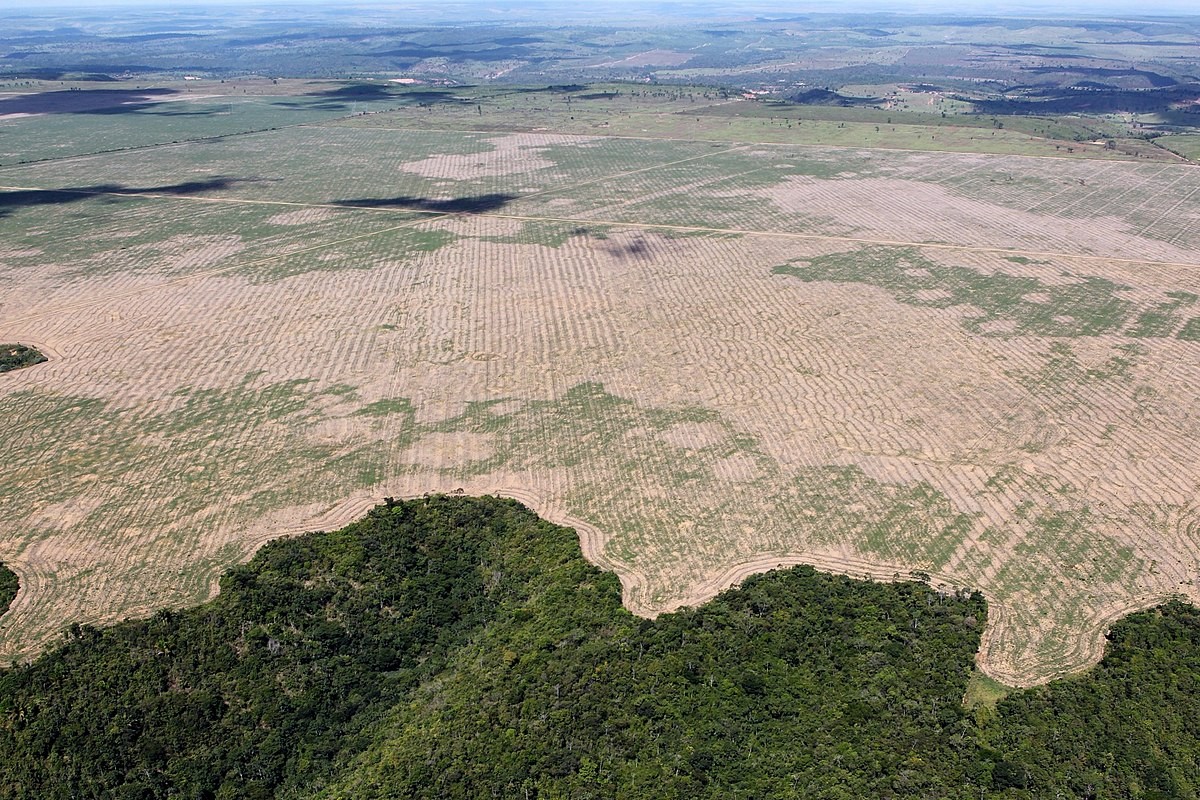
Massive deforestation in Brazil is part of the country's plan to increase livestock supplies for food production
Unless we start growing crops on the moon and drill distant planets to sustain our voracious appetite for energy and minerals, pandemics will be just one of many competing challenges to a population that’s currently out of control.
We haven’t even mentioned the devastation our growing billions bring upon the planet itself, as global temperatures rise with every ounce of carbon emitted and the earth’s forests, its lungs, are cleared to grow and raise more food.
Food production and distribution currently causes 26 percent of all global greenhouse gas emissions. As the population continues to explode and moves farther away from where food is produced, this number will keep climbing.
The need to accommodate rapid population growth has become a constant in places across the planet, including Peel Region, one of the fastest growing areas in Canada.
Mississauga and Brampton have official plans dedicated to the principle of denser, more walkable communities, with giant pods of mixed-use developments – to “intensify areas already developed.”
On May 1, a Provincial Policy Statement was scheduled to be introduced to protect land and build density. Mississauga is in the middle of tremendous development, including the M City condos in the city centre which will complement the Marilyn Monroe towers at Hurontario and Burnhamthorpe.
Oxford Properties is set to infuse the Square One District with the largest mixed-use development in Canadian history, a 37-tower project. The proposed Lakeview Village project on the old hydro lands in the southeast section of the city has almost doubled in density since the original concept, and in Brampton, plans to turn Shoppers World and Bramalea City Centre into massive mixed-use communities, are now in the works.
Dr. Earl Brown, a professor of microbiology at the University of Ottawa Faculty of Medicine, says one of the biggest factors in the mutation rate of viruses is population density.
Will one of the spinoffs from this pandemic be a reassessment of urban design, to pull back on the Manhattanizing of our world? Will we have to react to the fact the crowded streets of NYC and Wuhan might have contributed to the multiplication of the novel coronavirus in these packed urban destinations where isolation is something people only do in their minds?
Plagues keep epidemiologists up at night, bent over their microscopes, worrying that another pestilence is on the way. This is a subconscious carryover from pandemics past, like The Black Death, perhaps the most catastrophic event in European history when 30 to 50 percent of the population was wiped out in the worst days of the 14th century. It reappeared in the 16th century, and even closed down the theatres during Shakespearian times. When the great bard's son died of the plague at 11, he wrote Hamlet, his masterwork, proving again that art often comes from great pain.
Back in Shakespeare’s time, before microbiology was even a vocation, death came via an invisible hand, and few connected the spiriting away of life to germs that jumped from animals to man. Throughout most of our history, both species lived in close proximity, almost on top of each other – a petri dish of trouble.
Before the latest coronavirus, few of us had heard the term zoonotic, a disease that spreads from animals to humans. Rabies might be the best-known example, but mutated viruses like COVID-19 are a much deadlier threat. Its ability to jump from host to host, is one of the traits that has given the various strains of influenza virus such a long life and has made them nearly impossible to eradicate.

In our more sanitized era, the chance of a deadly plague finding its footing seemed like a fanciful plotline from a B-rate horror film. Not true. There has been a grab bag of nasties over the past few years including H1N1 (swine flu), SARS, Ebola, Zika, and now COVID-19 which has killed over 113,000 (and counting), and ruined the world’s economy (the depth, still to be determined).
What’s most scary is the timeline. Scientists warn that even as social distancing drops the number of cases and we get back to “normal,” it could re-appear at any time. In fact, COVID-19 might become a cyclical event, lapsing then reappearing until a vaccine is found, which might be as much as 18 months to two years down the road.
It’s also unclear what will happen to populations and global supply chains when the virus inevitably begins its rapid expansion throughout the developing world. The nature of commerce and wealth, how enterprise moves, has determined its initial spread across more affluent nations first. While the devastation is severe, these are the countries with modern, well resourced healthcare systems and the ability to mitigate the impact. In India, epidemiologists have predicted as many as 500 million cases there, with little ability to stage a fight in the teeming slums where millions of the abjectly poor will be left largely exposed.
What has many of us off-balance is that it came at us so quickly. Yes, we heard about China early in the year and Italy became a growing concern weeks ago, but the killer was already here, and almost everywhere.
The stories of people suffering and dying alone, are tragic, and put a human face on this nightmare. So now we are stuck indoors, and our lives have done a 180. Gone are the freedoms we once held dear, the family events, our work relationships, going to a hockey game, having coffee at Tim’s, walking the boardwalk with a hundred other strollers on a perfect spring day, hanging out with friends for an after-work drink at the bar, swapping stories, making plans for that summer vacation you planned for years in Kenya, Italy, China, or on the Rocky Mountaineer train through Canada’s breathtaking western peaks.
We won’t be going to see any of them soon.
A virus is more likely to spread through a gritty street in New York, than from a pastoral setting that is thinly populated. The Black Plague rode into town on the back of a tiny flea, found a host of animals (usually rats), then jumped over to humans, and went unchecked by a medical community still lacking the tools to look into the world of microbes.
Which brings us back to the warners. More than a decade ago (2007), David Waltner-Toews a veterinarian, epidemiologist, writer/poet and professor at the University of Guelph, authored The Chickens Fight Back: Pandemic Panics and Deadly Diseases which talked about the dangers of industrial farming and how deadly viruses can jump from animals to man.
It was a cautionary tale that joined a rather large sub-sector of books that talked about pandemics and went virtually unread by most of the public. Today, it’s so prescient, Greystone Publishing has urged the professor (now emeritus) to re-do his text, and in late May, On Pandemics: Deadly Diseases from Bubonic Plague to Coronavirus, will be released to the public.
Warners like Waltner-Towes, who grew up in Winnipeg to a Mennonite family, brings plenty of street cred to this subject matter, and in the past, has written about such diverse topics as poo, not pooh with an h, but the stuff that bears leave in the woods. Another of his books, The Origin of Feces: What Excrement Tells Us About Evolution, Ecology, and a Sustainable Society, tells us about the deadly consequences of increased animal fecal matter.
Animal waste is forecast to increase 40 percent from 2003 to 2030, and over the next decade, 5 billion tons will infest our world. Much of it ripe with diseases. Two other epidemiologists, Malik Peiris and Yi Guan write, “‘nature remains the greatest bioterrorist threat of all.” Waltner-Towes said it’s “important to fundamentally rethink humankind’s place in the world.”
Our science community has known for years that animals used in livestock production are reservoirs of zoonotic infections. The Guelph professor knows it firsthand because as well as his academic credentials, he is also a working veterinarian.
Remember that measles, TB, and smallpox were at one time “emerging” diseases that eventually made a permanent, and quite deadly jump to humans. This has always given epidemiologists pause. One reviewer said the Kitchener author’s books help “dispel panic and educate us into action.”
He explains how we have picked up diseases from animals ranging from fleas and ticks to cats, dogs, rats, pigs, mice, chickens, and cattle. Whether it comes from a “wet market" in Wuhan, or an industrial chicken farm in southern Ontario that feeds our hungry need for fast food, the chance that strict rules of hygiene are followed, is a constant worry with our warners. While we idle at home, we are slowly coming to the realization of how vulnerable we are – and how our place on this planet is not guaranteed. Humans need guarantees.
While Waltner-Towes’ new book is much anticipated, The Body: A Guide for Occupants by popular author Bill Bryson (The Short History of Everything) is already here, published in 2019.
These two authors offer a powerful one-two punch, especially as we hunker in our homes but feel helpless to come to grips with this rolling menace. Bryson has the talent to unspool scientific jargon and put into laymen’s language what currently ails us. Two chapters, ‘The Immune System,’ and 'Deep Breathing: The Lungs' ooze out powerful facts and great storytelling – much needed as we fend off something 99 percent of us didn’t know existed three months ago.
Bryson quickly puts to bed all those cockamamie theories of non-intervention that anti-vaxxers have spread like a pathogen over the internet the past few years. He jars us awake when he talks about The Black Death, called the mysterious sweating sickness in Britain from 1485 to 1551.
Bryson time travels from the dark ages to the modern world, and asks readers if they know that in Wisconsin a bacterial infection called Elizabethkingia (a soil microbe) once killed 15 people. Or that ticks carried a disease called Tularemia which killed 232 people in Arkansas between 2006 and 2016.
Bryson says mysterious pathogens are like an invisible poison that makes us sick, then we unwittingly pass along to others. Some viruses survive, some die, and no one seems to know why. In 1976 a bacterium from a genus called Legionella, hit an American Legion convention in Philadelphia during the 200th anniversary of American independence. It remains a mystery to scientists.
Whether a disease becomes epidemic is dependent on four factors, writes Bryson. For a virus to wreak havoc, it has to have a lethal makeup, excels at finding new victims, is difficult to contain, and is immune to vaccines. He points out that Ebola was so infectious, a single droplet of blood contained a hundred million particles, each as lethal as a hand grenade. In 2013, it hit three African countries and killed 11,000 of the 28,000 it infected. Luckily it didn’t spread easily, and world leaders (including U.S. president Barack Obama) fought a united fight to eradicate it – with great success.
The Spanish flu of 1918, which killed between 50 and 100 million, was highly transmissible, and Bryson thinks it is remarkable that bad things don’t happen more often.
Author Jared Diamond calls the invention of agriculture “a catastrophe from which we have never recovered.” In living with domesticated animals, “their disease become our diseases.” Bryson notes that plague, TB, typhus, measles, and flu, all vaulted from animals. Even the great French microbiologist Louis Pasteur who understood pathogens better than most, still lost three of his five children to typhoid fever.
Bryson’s book is full of such gems of information. He proudly points out that the World Health Organization, which Donald Trump has targeted for blame during this pandemic, and whose warnings he ignored, announced not long ago that the world had finally eliminated smallpox, the greatest scourge of the 20th century (500 million dead, many of them our indigenous peoples in North and South America). He then issued a chilling warning: two vials of it remain in freezers at the Center for Disease Control in Atlanta, and a Russian virology institute near Novosibirsk in Siberia.
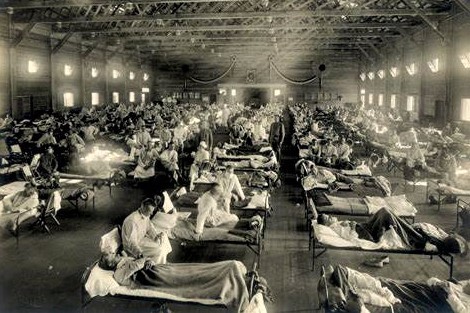
More than a century ago the Spanish Flu was a pandemic that created fear around the world
Bryson talks about diseases 99.9 percent of us have never heard of, including leishmaniasis, trachoma, and yaws. They are still active, and deadly. Meanwhile, tropical diseases affect more than 1 billion of us around the world. And for 90 percent of rare diseases, there are no treatments at all.
He interviewed Washington University’s Michael Kinch for his book, who believes “70 percent of the diseases that kill us could easily be preventable if we would just live more sensibly.” While diseases like diabetes, cardiovascular failure and obesity have genetic components, these increasingly ubiquitous maladies are often the by-product of our stressful, overindulgent lifestyles.
In a quote delivered well before our current pandemic emerged, Kinch said: “The fact is, we are really no better prepared for a bad outbreak today than we were when the Spanish flu killed tens of millions of people a hundred years ago. The reason we haven’t had another experience like that isn’t because we have been especially vigilant. It’s because we have been lucky.”
Our luck ran out at a wet market in Wuhan.
The Body is a marvelous and adaptable machine, and Bryson talks about how our immune system fights (sometimes to the death) to beat off those nasties that invade us from time to time. It doesn’t deal with just a rogue virus, but has to respond to toxins, drugs, cancers, foreign objects, damaging foods and even your own state of mind.
If you are stressed or exhausted, you are much more likely to suffer an infection. Because protecting us from invasion is such a never-ending challenge, the immune system sometimes makes mistakes and launches an attack on innocent cells or its defensive inflammatory response can do more damage than the threat.
While asymptomatic people look fine on the outside, a deadly duel is often taking place inside.
Is there any upside to all this downside?
The Wuhan market was a Hogarthian nightmare, overrun with people and dead animals with nasty payloads of diseases, and this became a dish for emerging killers, like COVID-19. When it made the jump from bats to humans it was propelled around the world inside hosts sitting on airplanes and vacationing on cruise ships. We are also at risk because of industrial level farming and food processing plants that churn out meat from animals in sometimes unsanitary conditions.
While viruses arise and jump from host to host in a mad game of multiplication, there have been plenty of warners along the way who told us to keep our guard up.
Warners like Dr. Anthony Fauci, Dr. Theresa Tam and Dr. Deborah Brix, were in early on the problem, and others jumped aboard later, like New York Governor Andrew Cuomo, even our Premier Doug Ford. But even before them were the epidemiologists like Dr. Waltner-Toews and dozens of his colleagues and fellow authors. Bryson’s book reads like an extended version of the old movie, Fantastic Voyage (an insider’s tour of the human body).
He helps us draw this conclusion: a warning light has been flashing in front of our eyes for years.
Others have been warning that even if it's not a pandemic that brings us to our knees, our current population growth and the flooding of cities, is not sustainable.
The density creates a pandemic nightmare, but the need to host and feed all our fellow humans is even more of a risk to our future.
Canadian icon Margaret Atwood’s 2003 novel Oryx and Crake was a dystopian warning call. She has written extensively and entertainingly on pandemics, including a feature she penned recently in The Globe and Mail. It talked about growing up in 1940s Ontario when measles and TB and even pertussis, whooping cough, were constant worries and wearing masks wasn’t foreign to us even then.
Yet, in times of excess, when our economy is humming along and life seems in the ascendency, these warnings were often ignored.
The big surge in upping our capacity to handle this first wave of the virus, has been heartening, but our lack of testing still leaves us vulnerable, and will delay our chances of getting out of our houses.
We are now forced to do what we should have been doing all along, listening to those talking blunt truth. The biggest takeaway is that the human race is as vulnerable today as it was in the past. We don’t have the excuse of ignorance that plagued the Dark Ages, and so gave it its name. The science is clear on what those who stare into a microscope have been telling us for years, that what they see is both nasty and deadly.
The crowding into cities in the middle ages, with humans and animals living in close quarters, was a recipe for disaster. But our modern-day lifestyle is also deadly. Our love of fast and processed food is driving up the diabetes, cardiovascular disease and obesity numbers. Our love of the car has caused a massive increase in Co2 gases that pollute our air and lungs.
The one saving grace from this pandemic’s spread, is that it has fostered a cleansing of our planet’s skies and water.
Another piece of good news is that while confined to our barracks, we have a chance to catch up on our reading.
Thomas Malthus is a good place to start.
With population increase that can’t be sustained, we need scientists, researchers and authors more than ever before. These warners can lead our planet to answers and inform us along the way.
Is it too much to expect our political and economic leaders to listen?
Submit a correction about this story


